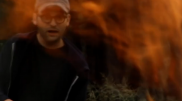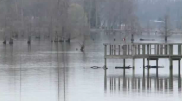Read Up: Great Articles On Exxon Valdez Spill
When the Exxon Valdez ran aground on the coast of Prince William Sound in 1989, thick oil spilled and spread over miles of the adjacent coast. It became one of the most highly-publicized spills in non-renewable energy history and the prime disaster scenario for generations of environmentalists.
The following articles represent some of the best in exploring the events surrounding the spill to understand the disaster's cause, impact and continuing legacy.
***
By Richard Behar, TIME
Immediately following the oil spill, a media blitz centered itself around Cap. Joseph Hazelwood of the Exxon Valdez. However, he wasn't the only cause of the accident. As this report reveals, his hard-partying past may be less of a contributing factor to the disaster and more of a media-incited red herring.
"In The Wake Of The Exxon Valdez: The Lost Frontier"
By Ross Anderson, Bill Dietrich and Mary Ann Gwinn, Seattle Times
This award-winning six-part series is one of the most comprehensive views of the six months following the Exxon Valdez disaster. From pollution to paperwork, these stories paint the fullest picture of what the region experienced and what its legacy became.
"How Much Oil Really Spilled From The Exxon Valdez?"
By Bob Garfield, NPR's On The Media
Answer: a lot. Although most of mainstream media held on to that oft-repeated "11 million gallons" number, the actual amount is much higher. This report explains why.
"Slick Coverage of the Exxon Valdez Spill"
By Martin A. Lee and Norman Solomon, Extra!
Lee and Solomon examine the coverage of the disaster by Newsweek, U.S. News & World Report and National Geographic. Besides highlighting omitted facts and missing context, the article outlines types of spin contained within media's reports on the spill.
"Still Digging Up Exxon Valdez Oil, 20 Years Later"
By Bryan Walsh, TIME
Walsh reports on the continuing effort to clean Prince William Sound nearly 20 years after the disaster. Although most is gone, the article outlines how dangerous a continued exposure to oil can be on the species that call the area home.





